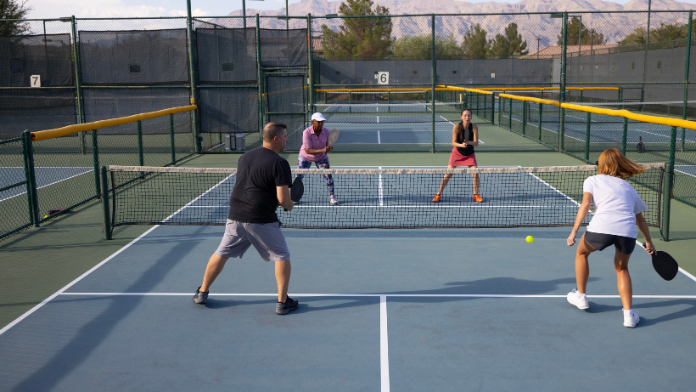Dynamic and easy to learn, the pickleball, which originally began as a family game in the United States in the 1960s, has recently been gaining considerable popularity, attracting a wide range of enthusiasts. Here’s what it is and why you should try it.
What is pickleball?
It is a sport that combines elements of tennis, badminton and table tennis. Pickleball was invented in 1965 and Joel Pritchard, Bill Bell e Barney McCallum, looking for a way the whole family could play together. It involves the use of rackets and one light and perforated ball. It can be played in singles or doubles, outdoors or indoors, on a rectangular playing field divided by a low net.
Loved by VIPs like Bill Gates, this sport is gradually receiving growing interest in Italy too, although it is not yet as widespread as in other countries. According to Topline Participation Report 2024 della Sports & Fitness Industry Association«for the third consecutive year pickleball is the fastest growing sport in America, having grown 51.8% from 2022 to 2023 and a staggering 223.5% over three years. This has contributed to an overall very positive trend in participation in racket sports, which reflects, in particular, the continued and solid participation numbers in tennis as well.”
How to play
All information on this sport can be found in the official manual USA Pickleball. Below, let’s look at some of them rules fundamentals:
Service: Players can serve quickly on handwhere the contact of the racket with the ball must not occur above waist level, or with a “drop serve“, which is performed by dropping the ball and serving it after it has bounced. The service must cross the field diagonally and land in the opposite playing area, beyond the non-volley zone.
Double bounce: after the servicethe receiving team must let the ball bounce once before playing it. Subsequently, the serving team must do the same. When the ball has bounced once on each side, players can choose to hit the ball on the fly or after a bounce.
Non-volley zone: in pickleball there is a area adjacent to the network where the players they cannot hit the ball on the flycalled “non-volley zone” or “kitchen”.
Score: only the serving team can score points. If the serving team makes an error, the right to serve passes to the opponent, but without awarding points. The matches are play to 11, 15 or 21 points. To win you must have an advantage of at least 2 points over your opponent.
Benefits of pickleball
From the point of view physicist, pickleball is a great exercise. The research teamApple Heart and Movement Study analyzed more than 250,000 pickleball and tennis workouts recorded on Apple Watch by people participating in the study, demonstrating the potential benefits of both disciplines for the salute. As Apple notes, although pickleball shows slightly longer average workout durations, “during tennis sessions the average time spent in high-intensity heart rate zones was longer, and on average maximum heart rate was higher.”
«Pickleball and tennis workouts were often quite long in duration, and peak heart rates were found to be within 70% of the estimated maximum heart rate during the recorded workouts. Practicing physical activity regularly improves the quality of life and helps you age healthily.” Similarly to tennis et al fellpickleball requires coordination, stimulating both body and mind. It can help socialization and the general well-being and, furthermore, playing doubles encourages communication and team play.
Prepare adequately to minimize the risk of injury
Pickleball also involves a risk of accidents therefore, especially at the beginning, it is advisable not to overdo it and always listen to the needs of your body. However, with adequate preparation, a good warm-up and using the appropriate equipment, it is possible to enjoy the game safely while minimizing the risks.
